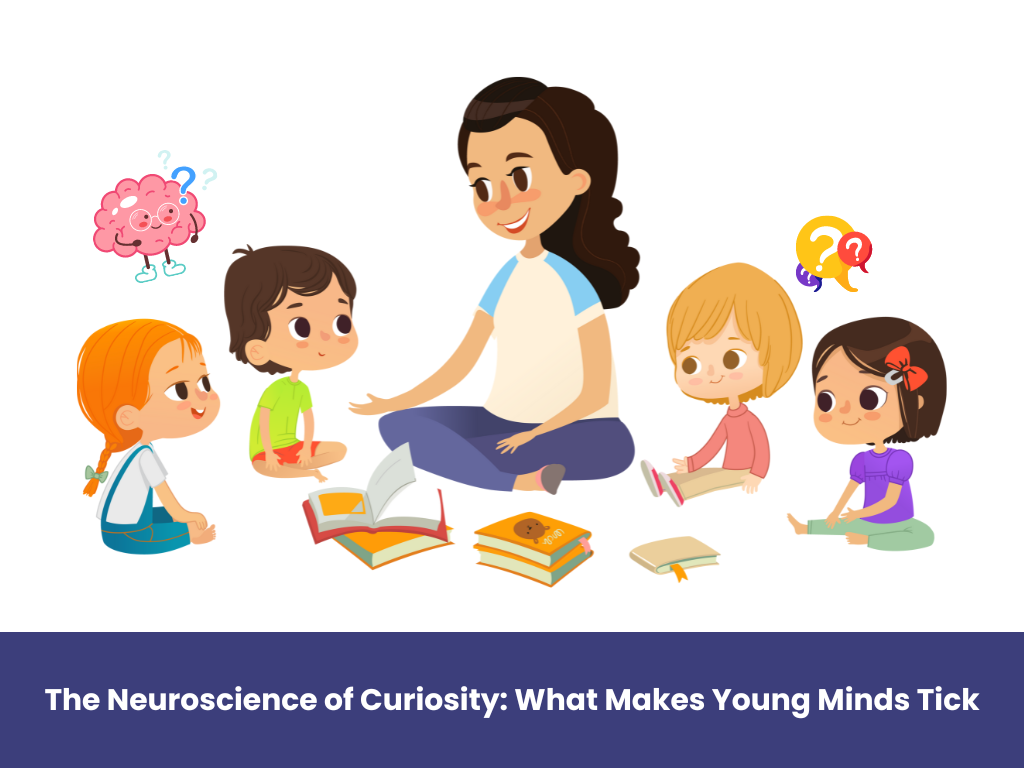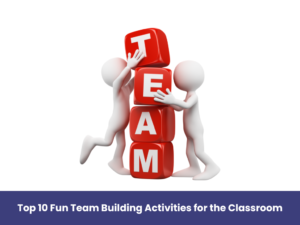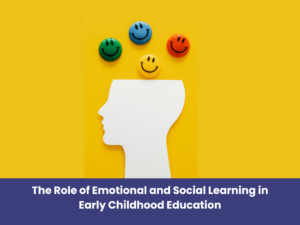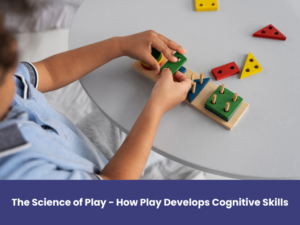Curiosity is the driving force behind learning and discovery, a fundamental aspect of the human experience that prompts individuals, especially young learners, to explore their world, seek new knowledge, and solve problems. In this article we at The Navyandhra Play School, one of the best preschool in Gurugram shall explore the neuroscience of curiosity, focusing on its mechanisms, effects on learning, and the factors that influence it in young minds.
Understanding Curiosity in the Brain
The quest to understand how curiosity is encoded in the brain has led neuroscientists to several key findings. Curiosity activates several brain regions that are involved in anticipation, memory, and reward.
-
The Dopamine System: At the heart of curiosity is the brain’s reward system, which is heavily influenced by the neurotransmitter dopamine. This chemical plays a crucial role in the pleasure and motivational components of curiosity. When we are curious about something, our brain anticipates a potential reward, and dopamine is released, which not only makes the process enjoyable but also enhances our ability to retain new information.
-
The Hippocampus: This area of the brain is critical for forming new memories. Studies have shown that when individuals are curious, their hippocampi are activated. This activation is associated with better learning and retention of information because the hippocampus is directly engaged in the process of consolidating new knowledge.
-
The Prefrontal Cortex: This region is involved in higher cognitive functions such as planning, decision-making, and problem-solving. When curiosity is piqued, the prefrontal cortex works to assimilate new information with existing knowledge, facilitating the storage and retrieval of new data.
The Impact of Curiosity on Learning
Curiosity not only makes learning more enjoyable but also more effective. Here’s how curiosity impacts learning processes:
-
Enhanced Memory: When students are curious, they remember information better. This is partly due to the increased activity in the hippocampus and the heightened dopamine release which are both linked to better memory and retention.
-
Improved Attention: Curiosity naturally heightens attention, directing the brain’s resources toward investigating the subject at hand. This focused attention helps young learners to ignore distractions, which is crucial in educational settings where numerous stimuli compete for a child’s attention.
-
Greater Problem-Solving Skills: Curiosity drives children to ask questions and explore different solutions, which enhances their problem-solving skills. This inquisitive approach fosters a deeper understanding of material and promotes flexible thinking.
Factors That Influence Curiosity in Children
Several factors can affect how curiosity manifests in young minds:
-
Environment: A stimulating environment that presents new sights, sounds, and experiences can enhance curiosity. Educational settings that encourage exploration and offer diverse learning materials are likely to foster a strong sense of curiosity.
-
Teaching Methods: Pedagogical approaches that involve open-ended questions, hands-on activities, and opportunities for discovery tend to boost curiosity more than rote memorization or lecture-based learning.
-
Emotional Safety: Children are more likely to exhibit curiosity when they feel emotionally safe and supported. In environments where there is too much pressure to perform or fear of making mistakes, curiosity can diminish.
Cultivating Curiosity in Educational Settings
Educators and parents can play a significant role in cultivating curiosity through several strategies:
-
Encouraging Exploration: Allowing children the freedom to explore their interests can significantly boost their curiosity. Educational systems should integrate choice-based learning where possible to cater to individual interests.
-
Asking Open-Ended Questions: These types of questions encourage thinking and exploration. They prompt children to form hypotheses and seek out answers, rather than simply recalling facts.
-
Modeling Curiosity: Adults can model curiosity through their behaviors and attitudes. When teachers and parents show enthusiasm for learning and discovery, children are likely to mimic these attitudes.
Conclusion
The neuroscience of curiosity reveals that this trait is not just a simple desire to know more but a complex, neurobiological process that enhances learning and cognitive development. We at The Navyandhra Play School, one of the best kindergarten in Gurugram, believe that understanding the brain mechanisms behind curiosity can help educators and parents create more effective learning environments that foster an enduring love of discovery in young minds. By nurturing curiosity, we equip children with a crucial tool for navigating their educational journeys and their eventual adult lives.




